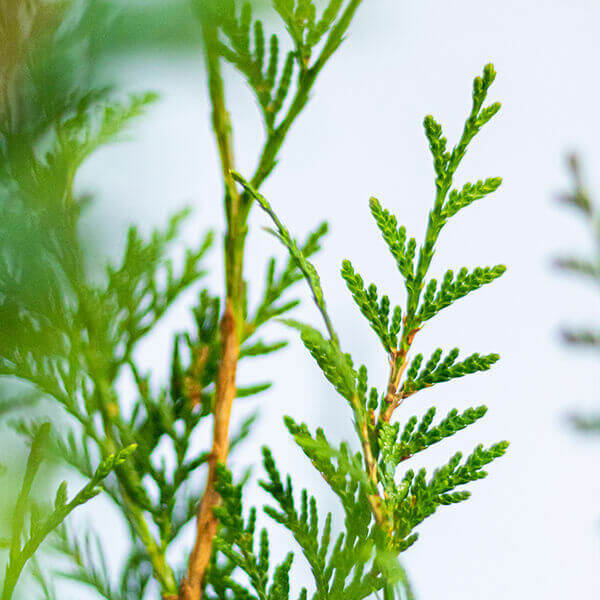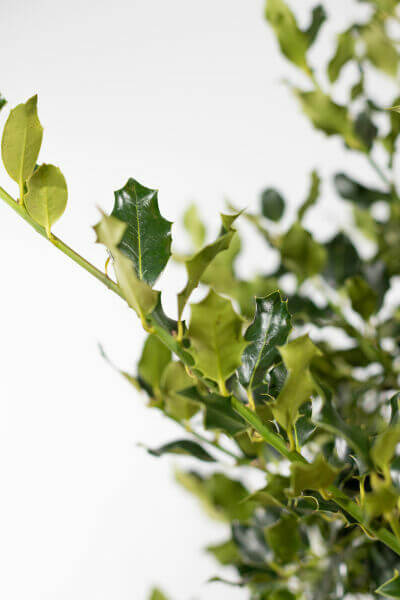Best Hedging Plants For Flowering Borders
Best Hedging Plants For Flowering Borders
Blog Article
Best Hedging Plants For Texture
Improve your garden's allure with lavish hedge varieties such as Yew (Taxus), Thuja, Laurel, Photinia, and Bamboo, commemorated for their structural integrity and ecological benefits.
Yew and Thuja offer evergreen protection and winter strength, while Laurel offers rapid growth and broad, aromatic leaves.
Photinia adds seasonal appeal with its lively red foliage, and Bamboo lends a low-maintenance, peaceful atmosphere.
These hedges improve air quality, minimize noise, and develop tranquil, private spaces.
Correct planting, spacing, and maintenance guarantee energetic development and environmental consistency.
Explore how these rich ranges can elevate your garden's charm and wellness.
Secret Takeaways
Change Your Garden With Lush Hedge Ranges
- Select Yew for its dense, evergreen growth and exceptional durability.
- Opt for Laurel for its fast growth and broad leaves, guaranteeing fast personal privacy.
- Pick Photinia for its vibrant seasonal foliage, which turns a striking dark red.
- Utilize Bamboo for a low-maintenance, winter-hardy hedge with aesthetic appeal.
- Space plants 2-3 per meter and prune routinely for ideal development and health.
Popular Hedge Plants
When changing a garden with lavish hedge ranges, it's important to think about popular hedge plants such as Yew, Thuja, Laurel, and Photinia due to their unique characteristics and benefits.
Yew (Taxus) is highly esteemed for its longevity and thick, green development, making it a prime choice for sustaining landscapes.
Thuja is kept in mind for its evergreen foliage and robust winter season durability.
Photinia includes seasonal vibrancy with red leaves that darken gradually, producing dynamic visual appeal.
Laurel provides quick development and aromatic, broad leaves, suitable for quick privacy.
Additionally, Bamboo is an excellent choice for atmosphere, offering a low-maintenance, winter-hardy alternative that enhances the garden's visual with its classy, swaying walking canes.
These choices cater to a range of horticultural needs and preferences.
Benefits of Garden Hedges
Garden hedges use a plethora of advantages, making them an important addition to any landscape. These natural barriers are economical to implement and supply substantial wind protection, enhancing air flow and contributing to noise reduction. The dense foliage of hedges like Thuja and Beech makes sure privacy by obstructing presence, producing a secluded and tranquil environment.
Hedges likewise play a crucial function in microclimate regulation, supplying a stable environment that cultivates plant growth and decreases temperature variations. Their intricate leaf structures filter toxins, improving air quality and adding to a healthier garden community.
Moreover, hedges stand out in sound reduction, soaking up and deflecting sound waves to lower ambient sound levels. This dual performance of supplying both visual and acoustic personal privacy enhances the general tranquility and aesthetic appeal of any garden.
Planting and Upkeep Tips
For a successful hedge, precise preparation of the planting location is essential. Guarantee the soil has correct pH and drainage to support strong root advancement.
Area the plants appropriately for the selected types. Water the hedge regularly during its preliminary development phase, adjusting as needed with seasonal modifications.
Implement a organized pest control and disease avoidance method, utilizing natural or chemical treatments when required. Regularly check for aphids, mites, and fungal infections.
Apply mulch to maintain moisture and suppress weeds. Seasonal pruning promotes dense growth and air blood circulation, important for plant health.
Following these guidelines will assist you cultivate a dynamic, well-kept hedge that boosts the appeal of your garden.
Spacing and Cutting Standards
Spacing and Cutting Guidelines
Proper spacing and trimming are vital for cultivating healthy, aesthetically appealing hedges. Adequate spacing guarantees each plant receives adequate nutrients, light, and air flow.
Follow these standards for ideal hedge maintenance:
- Spacing: Position hedge plants 2-3 plants per meter to encourage robust development.
- Pruning Strategies: Routine pruning is necessary for preserving preferred hedge height and shape. Cut new growth in summer season and cut down older wood during winter season.
- Seasonal Care: Adjust trimming methods and schedules according to seasonal requirements to guarantee plant health.
- Hedge Height: Routinely screen and trim to maintain the desired hedge height and attain consistent looks.
Following these actions will ensure your hedge grows, improving both the appeal and functionality of your garden.
Choosing the Right Hedge
Selecting the Right Hedge
Picking the suitable hedge includes examining elements such as fully grown height, foliage density, and ecological durability. Successful hedge plant choice requires understanding each types' growth characteristics and site-specific flexibility.
For example, Yew (Taxus) uses outstanding longevity and thick growth, while Thuja is significant for its winter strength. Furthermore, considering maintenance requirements is crucial; fast-growing types like Laurel or Privet demand routine trimming, whereas low-maintenance choices like Bamboo or Ivy might be more effective for those seeking very little upkeep.
Environmental aspects such as soil type, light accessibility, and wetness conditions ought to likewise guide the selection procedure. This careful method makes sure the selected hedges will thrive, offering both visual and functional benefits to the garden landscape.
Delivery and Planting Guidance
To guarantee your hedge plants thrive, they must be provided by specialized couriers and planted immediately upon arrival.
Follow these essential steps for successful planting:
- Soil Preparation: Improve the soil with natural matter to improve drainage and nutrient material.
- Planting Depth: Develop a trench twice the width and equal to the depth of the root ball.
- Watering Methods: Water completely after planting, keeping the soil regularly damp however not filled.
- Mulching: Apply a layer of mulch to keep wetness and reduce weeds.
Consumer Assistance and Service
Given the essential function of prompt help in horticultural pursuits, our consumer assistance group is readily available six days a week through telephone, email, and social networks to use skilled advice and swiftly address any concerns. Their dedication to quick response times guarantees client fulfillment by solving questions connected to plant health, optimum planting approaches, and upkeep schedules.

-------------------
Email
Six days a week
This detailed assistance system, enhanced by a stellar 9.3/ 10 client ranking, highlights our commitment to enhancing the gardening experience for each client.
Often Asked Questions
The Length Of Time Does It Consider Hedge Plants to Develop?
Hedge plants generally require one to three years to become fully established, with the exact duration differing by types and growing conditions.
Reliable Additional info care throughout this important duration is necessary for robust development. Constant watering, alert weed control, and proper fertilizer application are critical in promoting strong root advancement.
For example, fast-growing species like Laurel may develop more rapidly, while slower-growing ranges such as Yew may take longer. Persistent maintenance accelerates the facility procedure, resulting in dense and healthy hedges.
What Are the very best Hedge Plants for Personal Privacy?
The concern of the very best hedge plants for privacy includes examining evergreen and deciduous choices.
Evergreen hedges like Thuja, Laurel, and Cypress provide year-round coverage, making sure continuous privacy.
On the other hand, deciduous hedges such as Beech offer seasonal personal privacy, shedding leaves in cooler months.
Key maintenance pointers for personal privacy hedges include routine trimming, fertilizing in spring, and correct spacing-- usually 2 to 3 plants per meter.
Additionally, constant watering and persistent weed removal are vital for promoting healthy, dense development.
Can Hedge Plants Draw In Wildlife to My Garden?
Yes, hedge plants can attract wildlife to your garden by supplying important advantages like shelter, food, and nesting websites, consequently improving regional biodiversity. Yew, holly, and laurel are outstanding for bring in birds, while ivy supports a variety of pests.
However, it is very important to note that there are some downsides, such as increased maintenance to manage pests and routine upkeep. Thoroughly selecting and preserving hedge ranges can help balance these advantages and drawbacks, ultimately promoting a lively and sustainable community in your garden.
Exist Any Flowering Hedge Plants Available?
Yes, there are flowering hedge plants offered that can boost the beauty of your garden.
For example, Elaeagnus, also called Olive Willow, produces aromatic white flowers in the fall, adding a touch of beauty.
Photinia, another popular option, showcases lively red leaves that mature into a rich green, developing a vibrant visual effect throughout the seasons.
To guarantee these plants prosper, it's important to practice proper pruning techniques and seasonal maintenance, such as trimming new growth in the summertime and cutting down in the winter season.
These procedures will assist maintain the health and aesthetic appeal of your flowering hedges.
How Do I Prevent Pests in My Hedge Plants?
To prevent pests in hedge plants, employ natural insect control techniques and preserve appropriate hedge care. Present helpful bugs like ladybugs, which victimize damaging bugs, to develop a well balanced community.
Routinely examine your hedges for signs of infestation and quickly eliminate any afflicted parts to prevent the spread. Guarantee the health of your hedges by applying well balanced fertilizers and supplying appropriate water.
Use mulching to keep soil moisture and proper spacing to reduce plant tension and promote robust development. These practices collectively help in reducing pest concerns and keeping a healthy hedge.
Conclusion
In essence, selecting the right hedge ranges such as Yew, Thuja, and Laurel can change any garden into a relaxing haven. These plants provide year-round plant, improve aesthetic appeal, and deal practical benefits like sound reduction and wind protection.
Correct planting methods, accurate spacing, constant watering, and seasonal trimming are vital for optimum growth.
Reputable delivery services and professional customer assistance guarantee a smooth experience from purchase to planting, making it easier than ever to elevate your outside space.
Garden hedges provide a wide range of advantages, making them a valuable addition to any landscape. These natural barriers are cost-effective to execute and provide considerable wind protection, boosting air circulation and contributing to sound reduction. The dense foliage of hedges like Thuja and Beech makes sure privacy by blocking visibility, producing a remote and serene environment.

Pruning Methods: Regular pruning is necessary for keeping preferred hedge height and shape. Trim brand-new growth in summer and cut back older wood during winter.
Report this page